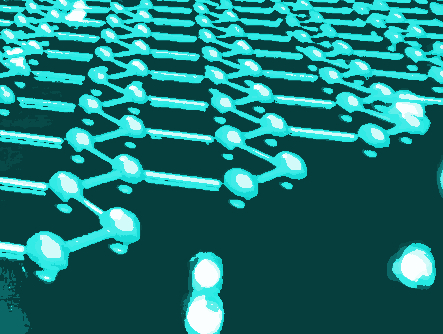There are many methods for producing different forms of graphene. Top-down methods tend to be the most commercially viable methods for producing large volumes. Bottom-up methods are often more tunable and produce higher-quality graphene products.
Andrey Turchanin, Universities of Jena and Ulm, Germany, Andreas Terfort, University of Frankfurt, Germany, and colleagues have developed a method for producing porous graphene and tuning the product’s porosity and crystallinity. The researchers used self-assembled monolayers (SAMs) of aromatic molecules as precursors for the graphene.
The team chose SAMs that contain pyridine and pyrrole constituents. The SAMs were placed on copper foils and converted into carbon nanomembranes through a low-energy electron-irradiation-induced cross-linking reaction. This was followed by a conversion into graphene monolayers through pyrolysis.
Pores are formed in the graphene sheet when the precursors’ nitrogen atoms leave the carbon nanosheets during the pyrolysis reaction. The pyrolysis temperature and choice of SAM precursor can both be used to tune the degree of porosity and crystallinity in the graphene sheet. The resulting porous graphene sheets have properties that resemble graphene nanoribbons (GNRs), with a charge carrier mobility of around 600 cm2/(Vs).
- Bottom-Up Synthesis of Graphene Monolayers with Tunable Crystallinity and Porosity,
Christof Neumann, David Kaiser, Michael J. Mohn, Matthias Füser, Nils-Eike Weber, Oliver Reimer, Armin Gölzhäuser, Thomas Weimann, Andreas Terfort, Ute Kaiser, Andrey Turchanin,
ACS Nano 2019.
https://doi.org/10.1021/acsnano.9b03475



![Synthesis of [c2]Daisy Chains via Mechanochemistry](https://www.chemistryviews.org/wp-content/uploads/2025/04/202504_RotaxanesWithSolidStateMechanochemistry-125x94.png)
